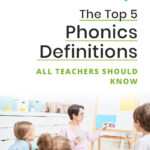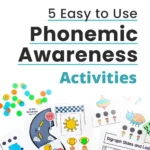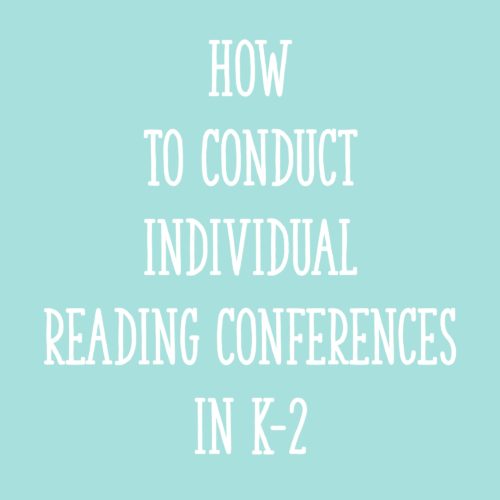Phonemic awareness is the awareness of individual speech sounds, like the /p/ sound in “pool” or the /ch/ sound in “reach.” Not all phonics programs include lessons or activities on phonemic awareness, but it’s so important!
In this blog post, I’ll explain why phonemic awareness matters for students, what the different levels of phonemic awareness are, and I’ll provide an example of each level.
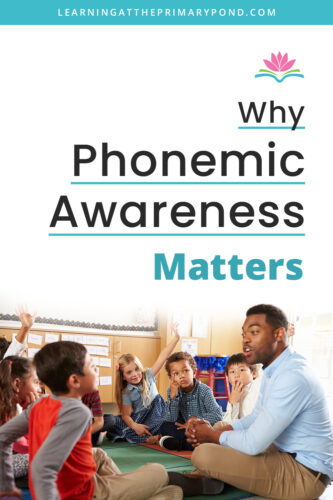
Why Should I Include Phonemic Awareness In My Instruction?
Phonemic awareness matters, and here’s why:
- Phonemic awareness helps students learn phonics, the relationship between sounds and letters.
- Learning to read requires skills that the brain is not “wired” for. Kids have to learn to pay attention to the individual sounds in words (and how they are represented with letters). Phonemic awareness builds this skill.
- Strong phonemic awareness can help with encoding (spelling). When students can isolate and manipulate phonemes, they are better equipped to understand how sounds are represented with letters and letter combinations. This skill is crucial for accurate and confident spelling, a key component of effective written communication.
- Proficiency in phonemic awareness contributes to success in decoding. As students’ decoding progresses, so does their fluency – the ability to read smoothly and with expression. With improved fluency, students can focus on understanding the meaning of the text, leading to improved comprehension.
- Phonemic awareness is often a key indicator of a child’s future success in reading. Identifying challenges in this area early on allows for targeted interventions if necessary. This can sometimes prevent reading difficulties from escalating. Early intervention is crucial in ensuring that children develop strong foundational skills.
Phonemic awareness is part of the broader category of phonological awareness which focuses on the sound structures of language. This does not involve letters or print of any sort. Some phonological awareness skills include:
- Identifying the individual words in a sentence spoken aloud
- Identifying and generating rhyming words
- Separating words into onset and rime and combining onsets and rimes into words
- Separating words into syllables and blending syllables together to make words
- Phonemic awareness
(To learn more about the difference between all of these skills, check out this blog: The Top 5 Phonics Definitions All Teachers Should Know)
Note that even though pure phonological awareness does not involve letters or print, it is also effective to practice phonological awareness with letters and words, especially as children learn to read.
Our phonics program, From Sounds to Spelling®, has a strong phonological awareness component. The program tells you exactly how, and when, to work on these skills with your students. There’s lots of flexibility to meet the needs of different students, too.
What Are the Six Levels of Phonemic Awareness?
There are many different skills within the category of phonemic awareness. They include:
- Isolating sounds
- Blending sounds
- Segmenting sounds
- Adding sounds
- Deleting sounds
- Substituting sounds
The graphic below shows these same phonemic awareness skills. Notice that the skills are listed at different levels – that’s because some phonemic awareness skills are more difficult than others.
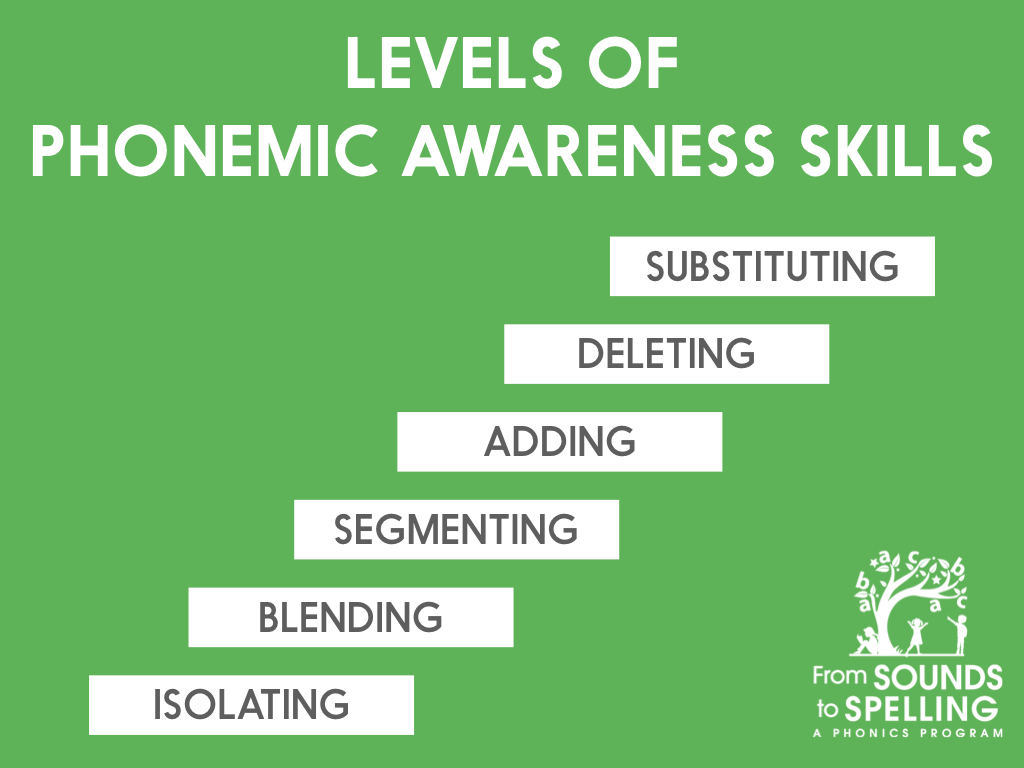
Examples of Phonemic Awareness Skills
Isolating: Even though isolating sounds is the “easiest” skill, there are still levels of difficulty within this step:
- Children usually begin by learning to say the first sound in a word. For example, they might identify the first sound in the word “fun” as /f/. If that’s still too difficult, you might try having students match pairs of pictures that begin with the same sound (without asking them to identify that sound yet).
- Eventually, children learn to isolate the final sound in a word (i.e. /t/ in “pat”) and medial vowel sounds (i.e. /i/ in “lip” or the long a sound in “rain”)
Blending: This is when we say sounds aloud and students say the entire word. If we say /a/ /t/, students must put those sounds together and say the word “at.” Again, there are different levels of difficulty within blending. You might start with 2-sound words like “up” and “go,” progress to 3-sound words, and eventually incorporate more challenging sounds like digraphs, blends, and diphthongs.
Segmenting: Phoneme segmenting is when we say a word (i.e. “trap”) and students tell us the sounds (/t/ /r/ /a/ /p/). Just like with blending, different types of words can be more or less challenging for students to segment.
With the next 3 levels, we’re moving into phoneme manipulation, which includes adding, deleting, and substituting phonemes.
Adding Phonemes: This means having students orally add a sound to a word. We might say “The word is ‘at.’ Add /k/ to the beginning, and we get…” (cat) You can have students add phonemes to the beginning or end of words.
You can even have students insert a phoneme after the first sound to make a word with a consonant blend: “The word is sip. Sip, add /n/ after /s/, and we get…” (snip) Of course, this is challenging for many young students!
Deleting Phonemes: As it sounds, this is deleting or removing a phoneme. Example: “The word is ‘lake.’ Lake, take away /k/, and we get…” (lay) Notice that the actual spelling of the word does not matter – it’s about the sounds.
Phoneme Substitution: This is when you’re switching out a sound in a word. You might say, “The word is ‘had.’ Say /m/ instead of /h/ and we get…” (mad).
In some phonemic awareness and/or phonics programs (like From Sounds to Spelling®), you may notice that the program “skips” around a bit rather than waiting for students to fully master phoneme isolation, then blending, then segmenting, etc.
This is because students can be successful with practicing a given skill with certain words, but not others. For example, students can segment 3-sound words but they can’t yet blend words with consonant blends. This might be counterintuitive because segmenting should be harder than blending, but it’s completely normal because words with consonant blends are often challenging for little ones.
There are many nuances to helping students develop phonemic awareness – and you need lots of practice activities because these skills take time to develop.
Conclusion
To learn more about our phonics program From Sounds to Spelling ® and to see examples of phonemic awareness and phonics activities at the Kindergarten, first grade, and second grade levels, go HERE for a free trial.
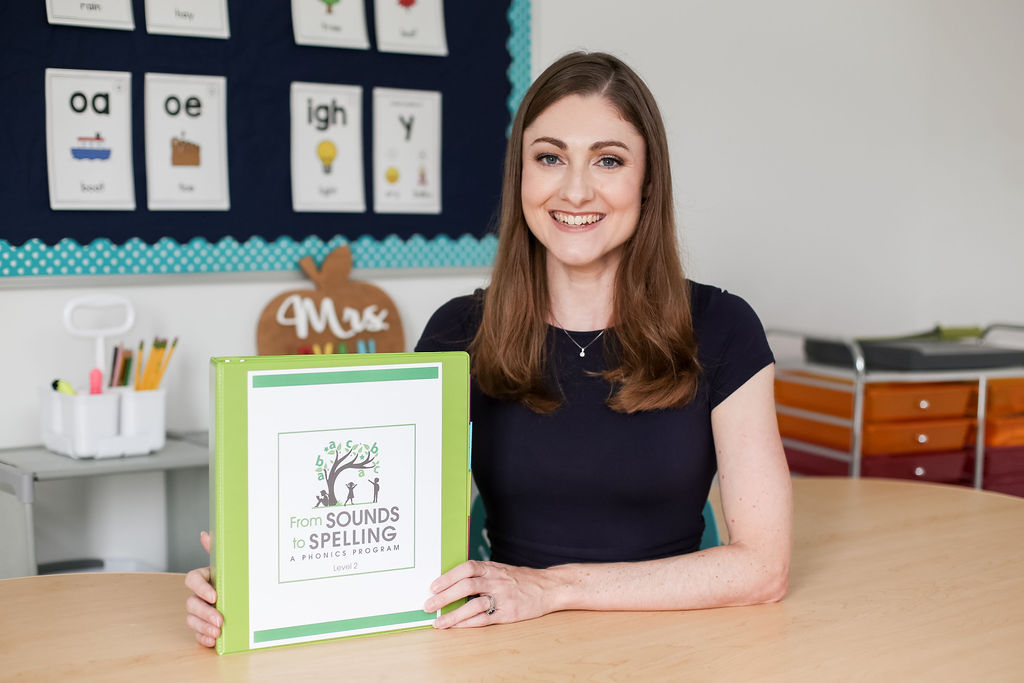
Happy teaching!

